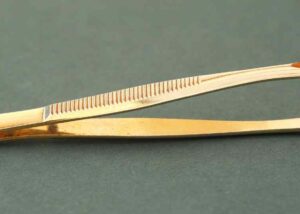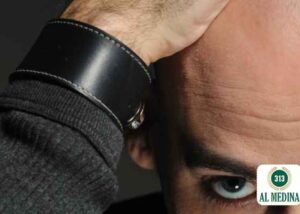Quran
Hadith
Islamic Text
No, you cannot look at the hair of a woman you are considering for marriage. This is because the hair is part of the Owrah (nakedness). However, one can enquire regarding it through a female Mahram relative, who may look at the hair.
عَنْ أَنَسٍ، أَنَّ النَّبِيَّ صَلَّى اللهُ عَلَيْهِ وَسَلَّمَ أَرْسَلَ أُمَّ سُلَيْمٍ تَنْظُرُ إِلَى جَارِيَةٍ، فَقَالَ: شُمِّي عَوَارِضَهَا، وَانْظُرِي إِلَى عُرْقُوبَيْهَا
(Sayidina) Anas (May Allah Most High be pleased with him) said, the Prophet ﷺ was considering marrying a woman. So he ﷺ sent (Sayidah) Umm Sulaym (May Allah Most High be pleased with her) to look at her. He ﷺ said, ‘Smell her molars (teeth), and look at her Achilles tendons.’ (Ahmad, 13424).
In the Hadith narration above the Prophet ﷺ has asked a lady to look at the lower leg of a prospective spouse. Presumably, this will then be reported back to the Messenger of Allah ﷺ. This has been used as evidence by some scholars to support the position that a woman can describe parts of a potential spouse’s body to the man who is considering her for marriage.
It is important to note that this ruling, of permissibility to have the hair described, is a departure from the standard ruling. Ordinarily, it is prohibited for a woman to describe another woman to her spouse or other men. Since this ruling is a departure from the standard ruling, it must be limited to need and necessity.
Imam al-Haythami considered the narrators of the above Hadith to be sound:
عَنْ أَنَسٍ أَنَّ النَّبِيَّ – صَلَّى اللَّهُ عَلَيْهِ وَسَلَّمَ – أَرْسَلَ أُمَّ سُلَيْمٍ تَنْظُرُ إِلَى جَارِيَةٍ فَقَالَ: ” شُمِّي عَوَارِضَهَا، وَانْظُرِي إِلَى عُرْقُوبَيْهَا “. رَوَاهُ أَحْمَدُ، وَالْبَزَّارُ، وَرِجَالُ أَحْمَدَ ثِقَاتٌ. (مجمع الزوائد ومنبع الفوائد)
It was narrated by (Imams) Ahmad and al-Bazar. The narrators of (Imam) Ahmad are sound. (Imam Noorud-deen al-Haythami, Majma’ al-Zawaid).
The Hadith was also narrated by Imam al-Hakim, with slightly variant wording. Imam al-Dhahabi said the narration aligned with the conditions of Imam Muslim. Therefore, he considered it authentic.
عَنْ أَنَسٍ رَضِيَ اللَّهُ عَنْهُ، أَنَّ النَّبِيَّ صَلَّى اللهُ عَلَيْهِ وَسَلَّمَ أَرَادَ أَنْ يَتَزَوَّجَ امْرَأَةً، فَبَعَثَ امْرَأَةً لِتَنْظُرَ إِلَيْهَا، فَقَالَ: شُمِّي عَوَارِضَهَا، وَانْظُرِي إِلَى عُرْقُوبَيْهَا. (قال الذهبي: على شرط مسلم)
(Sayidina) Anas (May Allah Most High be pleased with him) said, the Prophet ﷺ was considering marrying a woman. So he ﷺ sent a woman to look at her. He ﷺ said, ‘Smell her molars (teeth), and look at her Achilles tendons.’ (al-Hakim al-Mustadrak 2699, Sahih).
عُرْقُوبٍ بِضَمِّ الْعَيْنِ فِي الْمُفْرَدِ وَفَتْحِهَا في الجمع وهوالعصبة الَّتِي فَوْقَ الْعَقِبِ. (المنهاج شرح صحيح مسلم بن الحجاج)
Urqoob with a Dammah on the Ayn in the singular and Fathah in the plural, refers to the tendon above the heel (Achilles tendon). (Imam al-Nawawi, Sharh Sahih Muslim).
In the Nass above, Imam al-Nawawi explains that the word Urqoob refers to the Achilles tendon. This begins at the end of the heel and continues up the lower leg. This area is considered Owrah for the man. Therefore, he cannot look at it directly. However, the Hadith narration permits a woman to look at it.
وَظَاهِرُ مَا فِي غُرَرِ الْأَفْكَارِ جَوَازُ النَّظَرِ إلَى الْكَفَّيْنِ أَيْضًا، وَيَظْهَرُ مِنْ كَلَامِهِمْ أَنَّهُ إذَا لَمْ يُمْكِنْهُ النَّظَرُ يَجُوزُ إرْسَالُ نَحْوِ امْرَأَةٍ تَصِفُ لَهُ حَلَاهَا بِالطَّرِيقِ الْأَوْلَى، وَلَوْ غَيْرَ الْوَجْهِ وَالْكَفَّيْنِ. (رد المحتار على الدر المختار)
It is permitted to look at the palms too, based upon what is evident in Ghurar al-Afkaar. It becomes apparent from their discussions that he may send a woman (to look) if he is unable to look himself. She describes to him her beauty, even if it includes other than the face and hands. (Imam Ibn Abideen, Radd al-Muhtaar).
Once again it is important to emphasise that this ruling is an exception to the standard rule, where it is not permitted for a woman to describe the Owra of another woman to a man. Therefore, it must be limited to situations of need or necessity. The original ruling is highlighted in the following authentic Hadith.
عَنْ عَبْدِ اللَّهِ بْنِ مَسْعُودٍ رَضِيَ اللَّهُ عَنْهُ، قَالَ: قَالَ النَّبِيُّ صَلَّى اللهُ عَلَيْهِ وَسَلَّمَ: لاَ تُبَاشِرُ المَرْأَةُ المَرْأَةَ، فَتَنْعَتَهَا لِزَوْجِهَا كَأَنَّهُ يَنْظُرُ إِلَيْهَا
(Sayidina) Abdullah Ibn Mas’ud (May Allah Most High be pleased with him) narrated that the Messenger of Allah ﷺ said, ‘A woman must not come in close contact with another, and then describe her to her husband, such that it is as if he is looking at her.’ (Sahih al-Bukhari, 5240).
And Allah Most High Knows Best.
-Answered by Shaykh Noorud-deen Rashid (15.03.2023)
-Answer approved by Shaykh Mazin Bakeer, Damascus. (15-3-2023).
See also:
Taking surname of husband in Islam
See also video:






